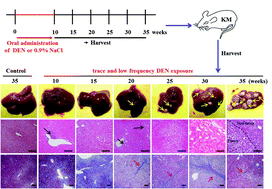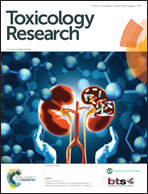Mouse hepatic neoplasm formation induced by trace level and low frequency exposure to diethylnitrosamine through β-catenin signaling pathway
Abstract
It has been reported that massive levels or/and high frequency exposure of diethylnitrosamine could induce hepatic neoplasm. However, it would be more interesting to figure out the hepatotoxic effects of diethylnitrosamine exposure at trace level and low frequency, which could be more common in our daily life. We found that both the mRNA and protein expression levels of β-catenin were aberrant in all liver tissues, accompanied by inflammation, steatosis, fibrosis and hepatic neoplasm after 10-week exposure of diethylnitrosamine (dissolved in sesame oil, 0.16 mmol per kg body weight) to mice. In addition, gradual increase in the mRNA expression of several pivotal risk factors (TNF-α, COX-2, PPAR-γ, AP-2, Smad-2, TGF-β1, and C-myc), as well as their protein expression levels, were associated with the aberrant expression or/and nucleus localization of β-catenin. Altogether, our results show that long-term diethylnitrosamine exposure at trace amounts and low frequency can also induce hepatotoxicity (including inflammation, steatosis and fibrosis) and consequently aberrant activation of β-catenin which in turn plays an important role in the initiation and promotion of liver tumors.


 Please wait while we load your content...
Please wait while we load your content...